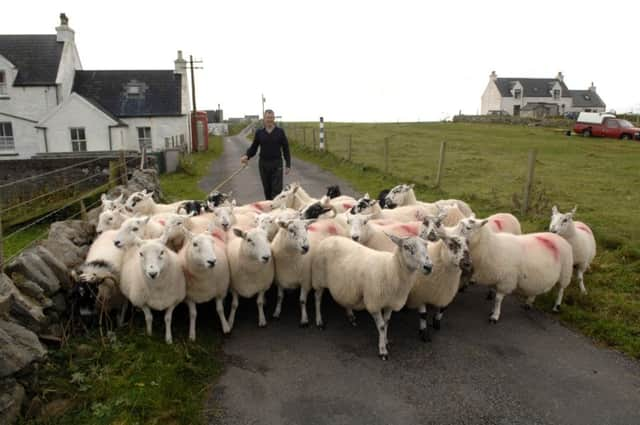Westminster boundary changes '˜will hit rural Scotland hardest'


The number of Scottish MPs will be reduced from 59 to 53 in time for the next General Election if the plans are approved, as expected.
The cut is part of wider proposals to reduce the number of MPs in the House of Commons from 650 to 600, backed by former prime minister David Cameron who pledged to more evenly distribute the number of voters.
Advertisement
Hide AdAdvertisement
Hide AdThe Boundary Commission for Scotland was instructed to redraw seats so each has between 71,031 and 78,507 voters and does not cover an area of more than 13,000 sq km (5,019 sq miles).
But the end result is some truly vast constituencies. The largest, Highland North, will cover 12,985 sq km - an area around the size of Northern Ireland.
Both the SNP and Scottish Labour are opposed to the changes.
Brendan O’Hara, SNP MP for Argyll and Bute since 2015, described the plan as a “crude numbers game”.
“I can understand, in the post-devolution era, there was a need to reduce the number of MPs to reflect the establishment of the Scottish Parliament,” he said.
“But we can’t be treated like London or central Glasgow, where moving one ward to a different constituency might be considered an inconvenience.
“There has to be a recognition things are very different in the western and northern Highlands.”
Mr O’Hara’s seat will be expanded to include Lochaber under the proposals. It will stretch from Canna to Campbeltown and from Mallaig to the Mull of Kintyre.
Advertisement
Hide AdAdvertisement
Hide Ad“If I came out my front door in Helensburgh and turned right towards Glasgow Airport, I could be in New York almost as quickly as I could reach the outer extremities of the constituency at Canna,” he added.
“While we remain in the UK, we have to have a voice, and we have to have Scotland’s rural and island communities properly represented at Westminster.”
Mr Cameron previously spoke of the need to “cut the cost of politics”. Critics point out that while the number of MPs will go down, the House of Lords continues to expand.
“My bugbear is this is a crude numbers game,” added O’Hara. “They have drawn circles on a map to equalise constituencies on the basis of population. The history, geography and topography of the Highlands and islands has not been taken into consideration.”
Only the Orkney and Shetland and Na h-Eileanan an Iar constituencies are currently protected by law, while East Lothian is the only other Scottish seat to be untouched by the plans.
Mr O’Hara said he would not go as far as to say Highland seats deserved legal protection, but that practicalities had to be considered.
“If you live in Glasgow or Edinburgh, arranging to meet your MP would be a fairly straightforward thing to do,” he said.
“But my seat already includes 23 inhabited islands, including Coll and Tiree, and could rise to around 30. It’s already a demanding thing to do.
Advertisement
Hide AdAdvertisement
Hide Ad“When I visit, people say, quite rightly, ‘we haven’t seen you for a while’.
“These reforms are not in the interests of the people of Argyll, Bute or Lochaber. It will not best serve the needs of its constituents”.